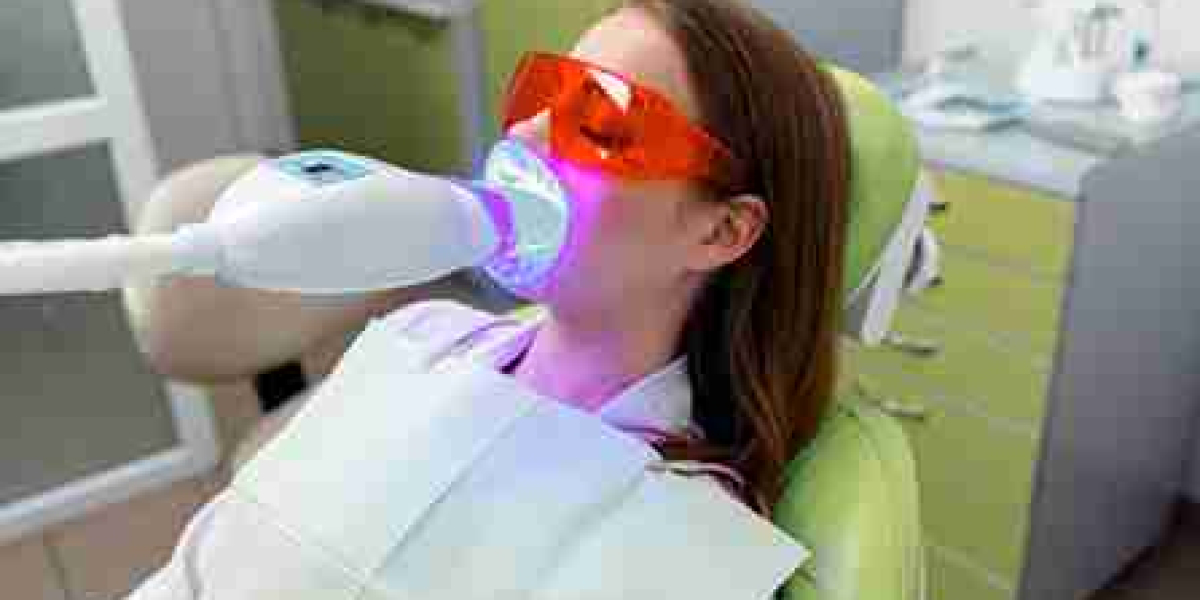Teeth whitening treatments have become one of the most sought-after cosmetic dental procedures, offering patients a brighter, more confident smile in a relatively short period of time. With so many options available, patients often have questions about the active ingredients used in whitening products. Two of the most commonly used bleaching agents are hydrogen peroxide and carbamide peroxide. While both are effective, they work in slightly different ways, and understanding their differences can help patients choose the best treatment when they visit a dentist in Peterborough for professional whitening options.This blog explores the science behind teeth whitening, key differences between hydrogen peroxide and carbamide peroxide, and the benefits of professional treatments over at-home alternatives, with a patient-focused explanation of what to expect during and after treatment.
How Teeth Whitening Works
Teeth can become discoloured over time due to daily habits, dietary choices, smoking, or the natural ageing process. Whitening treatments target stains both on the surface and deep within the tooth structure. The key to the process lies in the breakdown of peroxide-based gels, which release oxygen molecules. These molecules penetrate the enamel and react with pigmented compounds, breaking them down into smaller pieces and making the teeth appear whiter.Hydrogen peroxide is considered the stronger and faster-acting agent, often used in in-clinic whitening systems. Carbamide peroxide, on the other hand, is a compound that breaks down into hydrogen peroxide and urea, releasing the active ingredient gradually. Both are safe when controlled by a professional dentist in Peterborough, ensuring the concentration is appropriate for the patient’s oral condition and sensitivity levels.
Hydrogen Peroxide in Whitening Treatments
Hydrogen peroxide is widely recognised as the gold standard among whitening agents and is frequently used in professional whitening treatments, such as in-office procedures. Its main advantage is the speed at which it works. Because hydrogen peroxide directly releases oxygen when applied to the teeth, the bleaching process begins almost instantly.Patients seeking quicker results, especially before special occasions, often benefit from treatments that rely on hydrogen peroxide. For example, in-office whitening systems involve the application of a high concentration of hydrogen peroxide gel, sometimes enhanced with an LED or laser light to accelerate the process. Such treatments can lighten teeth by several shades in just a single appointment.
Carbamide Peroxide in Whitening Treatments
Carbamide peroxide is another widely used whitening agent, typically found in take-home whitening kits provided by a dentist. It contains hydrogen peroxide as one of its breakdown products but delivers it more gradually. For example, a 10% carbamide peroxide gel breaks down into roughly 3.5% hydrogen peroxide, releasing the active whitening ingredient over time.Because of its slower release, carbamide peroxide is particularly well-suited to at-home tray systems, designed for longer wear times such as overnight use. Patients with sensitive teeth often find this gentler option more tolerable, as the gradual process reduces the likelihood of intense discomfort.
Comparing Hydrogen Peroxide and Carbamide Peroxide
To illustrate the differences between the two whitening agents more clearly, here is a table highlighting key features:
Feature | Hydrogen Peroxide | Carbamide Peroxide |
Speed of Action | Fast-acting, visible in 1 session | Slower, gradual results over days |
Common Use | In-office treatments | Take-home whitening trays |
Concentration Range | 15–40% in professional systems | 10–35% (equivalent to 3.5–12% HP) |
Sensitivity Risk | Higher possibility of temporary sensitivity | Lower sensitivity risk due to slow release |
Best For | Quick results before events | Gentler, gradual whitening approach |
This comparison shows that neither product is inherently superior; rather, their suitability depends on patient needs and preferences. Professional assessment is essential to decide which option is ideal for long-term oral health and cosmetic goals.
Benefits of Professional Teeth Whitening
Instead of relying on over-the-counter products or online kits, visiting a professional is the safest and most effective way to achieve a brighter smile. Professional whitening treatments delivered by a dentist in Peterborough not only use medical-grade peroxide gels but also include protective measures tailored to each patient’s oral condition. This means:
- Personalised treatment plans designed around tooth sensitivity, shade goals, and lifestyle
- Reduced risk of gum irritation or enamel damage with professionally supervised application
- More lasting results compared to retail whitening products
Common Misconceptions About Whitening Treatments
Many patients worry that whitening can damage enamel or permanently weaken teeth. The truth is that when peroxide gels are used under dental supervision, whitening is entirely safe. Some sensitivity is normal, but it is temporary and easily managed through enamel-strengthening products such as fluoride gels or desensitising toothpastes.Another misconception is that whitening is permanent. Stain-causing habits such as coffee, tea, wine, or smoking can cause new discolouration. Maintenance whitening with professional kits helps preserve results for longer while maintaining good oral hygiene.
What Patients Can Expect During Treatment
During in-office teeth whitening in Peterborough, the dentist first examines the patient’s teeth and gums to ensure the procedure is suitable. A protective barrier is used around the gums, and the whitening gel is carefully applied. Sessions can last 30 to 90 minutes, with visible results after just one visit.For at-home whitening systems using carbamide peroxide, custom trays are created to fit the patient’s teeth. Gels are applied as prescribed, often overnight, with gradual results noticed within one to two weeks. Both systems are safe and effective when monitored by a dentist, giving patients the confidence that the right concentration and usage are tailored individually.
Choosing the Right Whitening Option
The choice between hydrogen peroxide and carbamide peroxide depends primarily on patient expectations, lifestyle, and tolerance to sensitivity. Those who need quick, dramatic results may prefer hydrogen peroxide treatments in-office. Patients who would rather whiten their teeth gradually in the comfort of their own home often find carbamide peroxide systems more attractive.Many dentists recommend a combination approach: patients begin with a professional in-office session for faster results and then continue at home with carbamide peroxide trays to maintain brightness over time. When carried out under professional supervision, teeth whitening in Peterborough ensures patients achieve safe, effective, and long-lasting improvements without unnecessary risks.
Aftercare for Long-Lasting Results
Whitening treatments can produce excellent results, but following aftercare advice is vital to maintain them.
- Avoid consumption of staining foods and drinks such as tea, coffee, or red wine immediately after treatment
- Use a straw when drinking coloured beverages to minimise contact with enamel
- Regular dental check-ups and hygiene appointments to keep stains under control
By following professional guidance, patients can enjoy brighter teeth for much longer, avoiding the quick fading sometimes seen with over-the-counter alternatives.
Conclusion
Whether patients choose hydrogen peroxide or carbamide peroxide, both whitening agents are highly effective when used under professional supervision. In-office treatments with hydrogen peroxide deliver rapid, visible improvements, while carbamide peroxide offers a slower, gentler option for at-home use. Consulting with an experienced dentist in Peterborough ensures that every patient receives safe, customised care for the best possible outcome. For those seeking reliable and lasting results with teeth whitening in Peterborough, professional treatment at EDP provides the right balance of science, safety, and cosmetic excellence.







